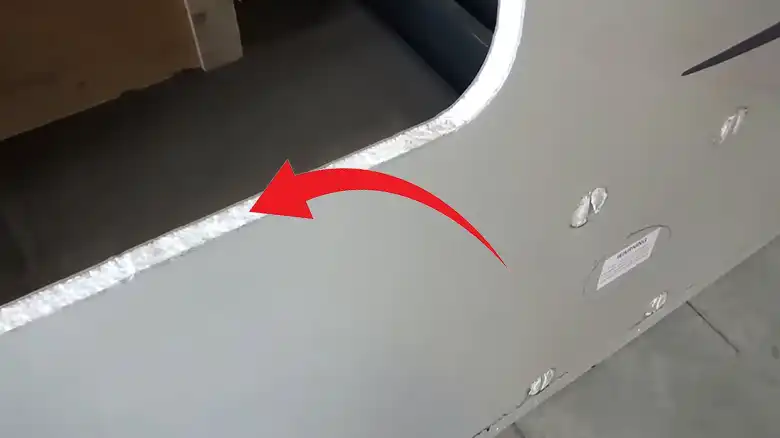When it comes to RVs, the thickness of the walls plays a crucial role in various aspects such as insulation, durability, noise reduction, and even the ability to hang items. With so many factors to consider, understanding the intricacies of RV wall thickness is essential for making an informed decision.
Recreational vehicles, or RVs, come in different classes – Class A, Class B, Class C, and Travel Trailers. Each class serves a unique purpose, catering to diverse camping styles and preferences. However, one common thread that binds all RVs is the importance of wall thickness. Thicker walls offer better insulation, enhanced soundproofing, and increased structural integrity, but they also add weight, which can impact fuel efficiency and towing capacity.

Types of RV Walls and Their Thickness
The construction methods and materials used in RV walls can vary significantly, resulting in different thickness levels. Let’s explore the most common types:
- Fiberglass Laminated Walls:
- Materials: Fiberglass exterior, gelcoat layer, wooden battens, and insulation
- Typical thickness range: 1″ – 3″, depending on the RV class and manufacturer
- Aluminum Framed Walls with Insulation:
- Materials: Aluminum framing, laminated interior panels, and insulation (foam or spray foam)
- Typical thickness range: 1.5″ – 2.5″
- Wood Framed Walls with Insulation (less common):
- Materials: Wood framing and insulation
- Typical thickness range: 1″ – 2″
- Advantages: Potential for customization
- Disadvantages: Susceptibility to moisture damage
Here’s a table summarizing typical RV wall thickness by class:
| RV Class | Wall Thickness Range |
| Class A | 2″ – 3″ |
| Class B | 1″ – 2″ |
| Class C | 1.5″ – 2.5″ |
| Travel Trailer | 1″ – 2.5″ |
Why Do RV Wall Thicknesses Vary?
Several factors influence the thickness of RV walls, including:
RV Class
- Class A motorhomes typically have the thickest walls for optimal insulation and noise reduction.
- Class B vans (van conversions) often have thinner walls for maneuverability and fuel efficiency.
- Class C motorhomes strike a balance between weight and insulation.
- Travel trailers can have variable wall thickness, depending on the manufacturer and seasonality.
Seasonal Use
- 3-season RVs may have thinner walls suitable for mild climates.
- 4-season RVs typically have thicker walls for better insulation in extreme temperatures.
Luxury vs. Budget RVs
Luxury RVs often prioritize thicker walls for better insulation, noise dampening, and overall comfort, while budget RVs may have thinner walls to reduce weight and cost.
Climatic Conditions
RVs intended for use in colder regions or extreme temperatures may require thicker walls for improved insulation.
Weight Limitations
Thicker walls add more weight, which can impact fuel efficiency and towing capacity, especially for smaller RVs.
How Wall Thickness Impacts RV Performance?
The thickness of RV walls directly affects several performance aspects. Thicker walls typically offer better insulation, thanks to higher R-values (a measure of thermal resistance), leading to improved temperature control and energy efficiency. For instance, a Class A motorhome with 2.5″ thick walls and an R-value of 12 can maintain a comfortable interior temperature more efficiently than a Class B van with 1″ thick walls and an R-value of 5.
Moreover, thicker walls provide better soundproofing, reducing external noise from engines, roads, and neighboring campsites, contributing to a more peaceful and enjoyable camping experience.
In terms of structural integrity and durability, thicker walls offer increased strength and resistance to dents, punctures, and other forms of damage, making them particularly important for off-road adventures or harsh weather conditions.
However, it’s important to note that while thicker walls improve insulation and durability, they also add weight to the RV, which can negatively impact fuel efficiency and towing capacity, especially for smaller RVs or those with limited towing capabilities.
Additionally, thicker walls provide more secure anchor points for hanging items, shelves, and storage solutions, although it’s essential to locate wall studs or use appropriate RV-specific fasteners to avoid damaging the walls.
Choosing the Right RV Wall Thickness for You
Selecting the appropriate RV wall thickness involves assessing your camping style and prioritizing the factors most important to you:
- If you plan to go full-time RVing, prioritize thicker walls for better insulation, noise reduction, and durability.
- For seasonal or occasional camping in milder climates, thinner walls may suffice.
- Off-road enthusiasts or those venturing into remote areas should opt for thicker, more durable walls.
Research specific RV models and manufacturer specifications, paying attention to R-value ratings, which provide insight into the insulation performance. Familiarize yourself with industry standards and codes related to RV wall thickness and insulation requirements, and look for certifications or ratings that indicate the RV’s suitability for different climatic conditions or seasons.
When it comes to finding wall studs and hanging items safely, consider using stud finders with metal detection capabilities, looking for existing screws or fixtures, using Command hooks or RV-specific screws with short lengths, and utilizing over-the-door organizers to maximize storage space without damaging walls.
Slide-Outs and Their Unique Wall Thickness Requirements
Many RVs feature slide-outs, which are expandable rooms that increase the interior living space. It’s important to note that the wall thickness of slide-outs may differ from the main walls of the RV. In some cases, slide-out walls can be thicker to support the additional weight and structural load. However, thicker slide-out walls can also contribute to increased overall weight, potentially affecting fuel efficiency and towing capacity.
Key Takeaways on RV Wall Thickness
Understanding the thickness of RV walls is essential for ensuring a comfortable, safe, and enjoyable camping experience. By considering factors like insulation needs, noise reduction, durability, and weight limitations, you can make an informed decision that aligns with your camping style and preferences.
Remember to research specific RV models, consult manufacturer specifications, and prioritize the factors most important to you. With the right wall thickness, your RV will provide a cozy home-on-wheels, allowing you to explore the great outdoors with confidence and comfort.


